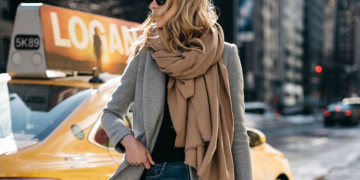Packing lights and skipping tight connections
Aside from the occasional need to pack his trekking poles, Steves insists that travelers should carry only one carry-on bag. Each year, Rick Steves’ Europe hosts 30,000 people on small-group trips, all of whom are limited to one carry-on bag-no checked bags allowed.
“If you don’t check your luggage, you’re less likely to get caught up in the chaos of all the airports in Europe,” Steves says.
Carry-on luggage is less likely to be stolen, lost or damaged, and Steves also likes that it helps with flexibility – you can easily switch flights without worrying about leaving your entire closet behind. Plus, he says, if you’re concerned about limited space, packing cubes are a worthwhile investment that can help you organize and compress your clothes into a smaller bag.
“You need to move forward,” says Steve.
Steves also supports arranging flight connections with plenty of time to spare, especially for international travel. For example, U.S. travelers visiting European Schengen-zone countries must pass passport control upon arrival in their first Schengen country. Therefore, if your final destination is Greece but your stopover is in Germany, make sure the connection time in Germany takes into account the possibility of immigration queues.
Book your popular reservations and go with the flow
Steves believes 2023 will be a busy year for travel, with sales of his guidebooks currently on par with the same period in 2019, which was the company’s best year ever. With the coronation of King Charles in London in May and the Olympics in Paris next year, Steves wants travelers to understand that some crowds will be inevitable.
“People really need to respect that there will be a lot of crowds in Europe,” he said.
Travelers who don’t plan anything in advance tend to stand in long lines and waste precious time in queues outside museums instead of spending more time inside. Steve (Steves) recommends using a guidebook, like his own, which was researched after the worst years of the pandemic, to account for any changes in the reservation system and update times.
“People are going to the same famous places more than ever before,” he says. “Museums want to moderate their mob scenes.”
One notable change today, he said, is that many attractions still require online reservations to help control large crowds, something they began doing during the pandemic and have kept up to ease the chaos of long lines outside. Steves said that in updating his guide, his focus is on making sure each chapter has a sidebar to review what visitors need to do ahead of time.
For example, Steves says, travelers who are organized to see Amsterdam only need to book four things in advance: the Anne Frank House, the Van Gogh Museum, the National Museum and a trendy restaurant for a delicious dinner.
“The flip side of the coin is that everything else is great. You don’t need to make reservations for everything else,” he says. “If a chance comes along, the answer is always yes.”
Once you have the core set of reservations you need, the rest of your trip can be easily arranged, Steeves says. There’s no need to worry about making dinner reservations every night – instead, head to the local restaurant-lined streets and pick a tasty, non-touristy spot.
“These days we tend to overthink things,” he says. “It takes away some of the fun of travel and makes things go in unpredictable ways.”
Rick Steves on a trip to Asia in 1978
Courtesy of RICK STEVES’ Europe
Avoiding Crowded Places
Steves says he’s noticed that so many travelers now get their recommendations from social media – and it’s having an impact. The result, he says, is that when everyone goes to the same place and tries to take the same pictures, it becomes overcrowded and difficult to enjoy.
“There may be a place that’s just as good, there may be 90 percent as good, but there’s no crowd at all across the street,” he says.
Instead of relying on Tripadvisor or Instagram, Steeves said, try embracing the local culture so your experience is less stressful.
“I’m not going to go crazy for No. 1,” he says. “No. 1 is the perceived best company in the system. [Instead], we try to find these little couples, these labors of love, these creative adventures-that’s what makes my book and the trip different.”
Perhaps the most important piece of advice Steve shared was that travelers often put a lot of pressure on themselves to check out the top museums, historic sites, restaurants and stores from every “best of” list. But this pressure can lead to a lot of travel anxiety and the feeling of running around because a place is famous.
His best advice? “Assume you’ll be back,” he says. “Never try to do everything in one trip, because you can’t do it.




























